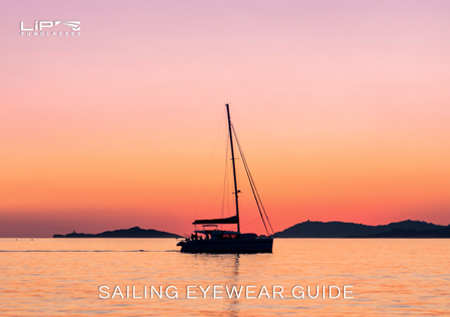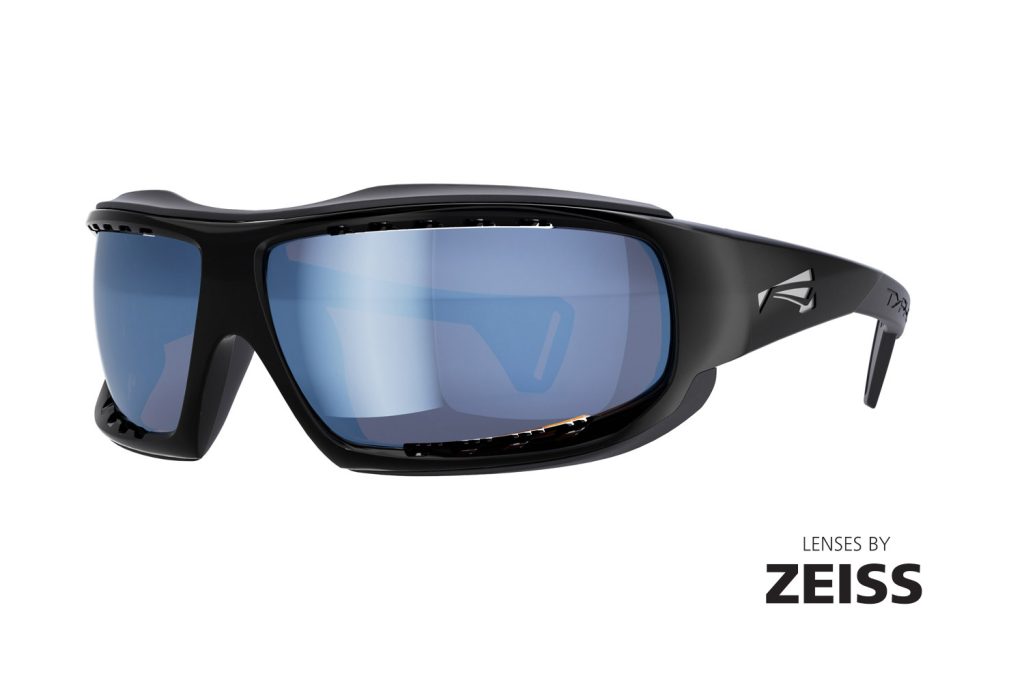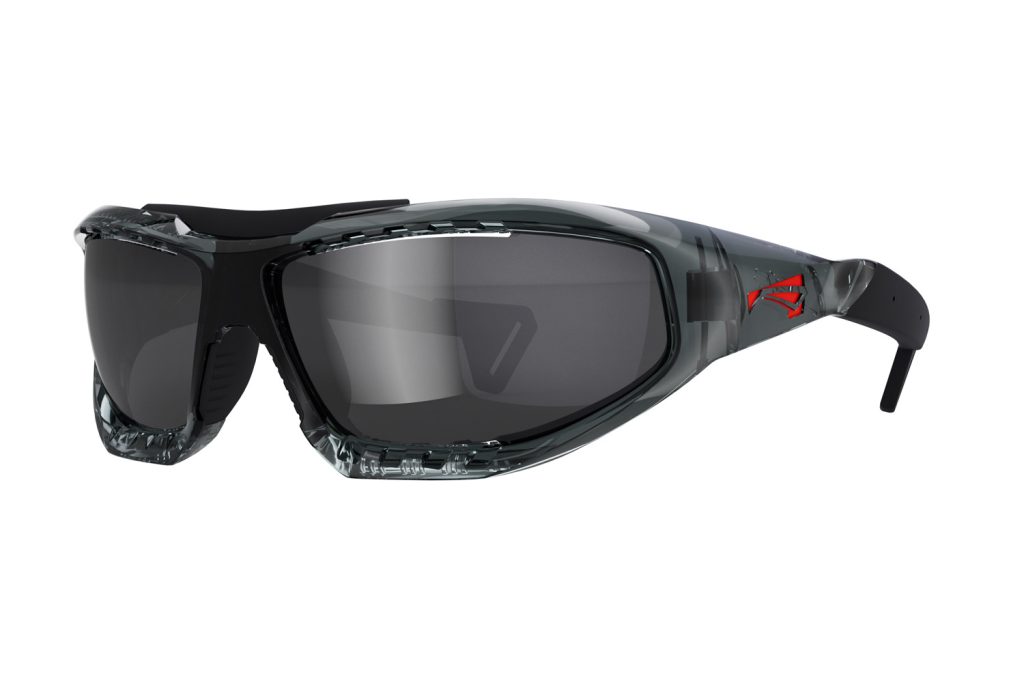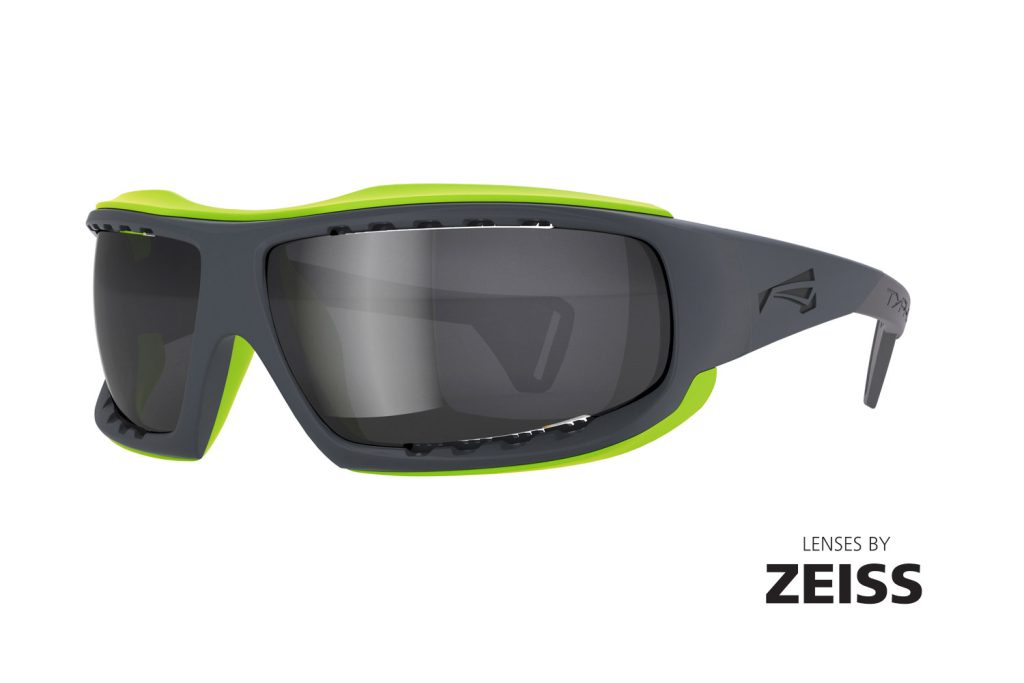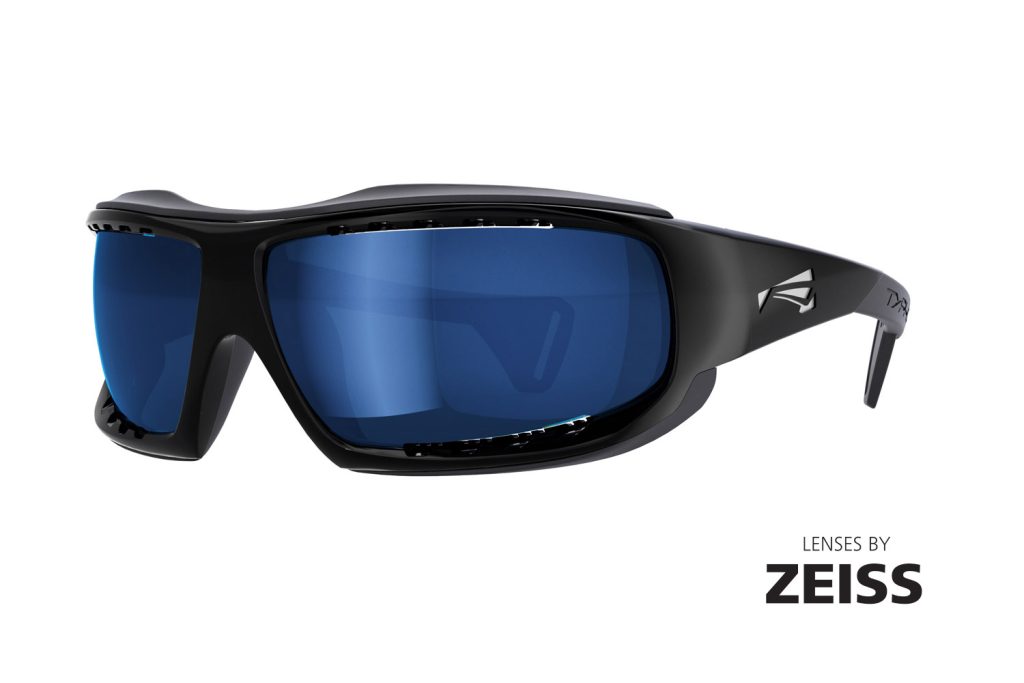We use cookies for a number of reasons such as keeping our website secure, personalising content and to analyse how our website is used. By using this website, you agree to our Terms and Conditions and Privacy Policy.
Sunglasses for Sailing
Each sailing discipline presents unique challenges when it comes to choosing the most suitable eyewear.
The model that is best suited to you will depend on the genre of sailing that you specialise in, the strength of the wind, the water conditions and the prevailing weather conditions. The first two considerations relate more to frame choice and the last two are more relevant to lens choice. We take a look at all of these factors below.
Before taking a closer look at the disciplines within sailing and how they might influence your choice of sunglasses, it’s worth remembering that there are 6 key considerations for keeping your eyes happy and healthy on the water.
UV & SPRAY PROTECTION
If there is a route for UV rays and sea-spray to get behind your lenses and into your eyes, it will be found!
With anything less than a full wrap frame, the gap between your face and the edge of the sunglasses frame is asking for trouble. Choosing an ‘8-base curve radius’ or ‘wrap’ frame is essential to minimise the potential for lasting damage to your eyes.
GLARE & POLARISATION
When sunlight is reflected off a surface like water it can lead to distracting and blinding glare, particularly when the sun is at a low angle. This not only makes life uncomfortable but it can also be hazardous particularly in a fast moving environment.
Polarised lenses cut out this blinding glare and increase comfort and contrast, which in turn reduces eye fatigue.
IMPACT PROTECTION
The frame & lenses should have good impact resistance. This will be kinder to your pocket and protect you against eye injury.
The frame should be robust, capable of withstanding impacts and shatterproof. The lenses should be constructed of high impact resistant material like polycarbonate, nylon or NXT™(Trivex™). Mineral lenses should be avoided at all costs.
VLT RATES
‘VLT’ (Visible Light Transmission) or “TV” rates determine what percentage of visible light (not to be confused with UV light) passes through the lenses and into the eyes.
Category 3 lenses are generally the most suitable for watersports, unless you’re located in a cloudy region where it might be more appropriate to consider a category 2 lens. Category 3 lenses let through between 8-18% of visible light.
LENS COATINGS
You’ll want to ensure that your lenses have at least a hydrophobic coating so that water droplets do not accumulate on the lens surface, and better still an oleophobic coating too.
A hydrophobic coating repels water whereas an oleophobic coating repels oils, sweat, dirt and dust. It is the last layer on the lenses. Having both of these coatings on your lenses will add significantly to your visual awareness and enjoyment.
RETENTION SYSTEM
Give some thought to what happens when you get broadsided by a wave. Will the jolt catapult your sunglasses into the ocean? Sunnies going overboard happens all too frequently and it’s surprising how fast it happens.
There are two ways to mitigate against this: Use sunglasses that float, or use a reliable retention system
High performance sunglasses for Sailing
Any seadog worth his salt knows that the ocean and weather are highly unpredictable, and that prevention over intervention is the only way to prepare for stormy seas.
If you’ve spent any time sailing, you’ll know how fast things can unravel when the wind suddenly picks up and the seas start heaving. The switch from blue sky to all hell breaking loose can happen in a matter of minutes, so maintaining a yacht in readiness for a tempest is the mark of a wise sailor. Lashing down everything on deck and in the cabin is the last thing you want to be doing when your world is being turned upside down.
‘Prevention over intervention’ perfectly encapsulates why sailing sunglasses are essential equipment for a sailor. Navigating a vessel safely means being constantly prepared to meet risks and challenges. This requires maintaining our vision in optimum condition and being ready to rise to the challenge of walls of sea-spray, congested waters, harsh reflected glare and a barrage of UV radiation. Prolonged exposure to UV radiation without adequate eye protection can lead to cumulative damage to the eye in the form of macular degeneration, cataracts and damage to the cornea. Compromised vision can also lead to collisions.
Water sport sunglasses must be fit for purpose if you want to navigate safely and in comfort. Besides the familiar risks inherent in sailing, the ubiquitous presence of sun and water creates an ocean of additional risk that your sunglasses need to accommodate. The best sunglasses for sailing are therefore those that will maximise eye protection and minimise potential hazards.
Read More...
6 point checklist for sailing eyewear
Lens material
An unsuitable choice of lens material could lead to a serious eye injury if a sudden and unexpected impact occurred. Mineral glass lenses might be nice to look through, but they could shatter on impact with a boom or anything else on board. Polycarbonate, polyamide or polyurethane lenses are the only lens materials that offer impact resistance.
Frame shape
With anything less than a wrap fit, the gap between your face and edge of the sunglasses frame is an invitation for trouble. Your peripheral vision will be disrupted by the frame, with all the navigational risks that entails. Direct and reflected light penetrating the sides is also not filtered, exposing your eyes to glare and the sun’s harmful UV rays all day long. And then there’s wind and spray which will always find its way in leading to red-eye and eye fatigue.
Lens distortion
Optically incorrect lenses can convince you that you are further away from an object than you really are, and that is a dangerous place to be. ‘Object shifting’ caused by poor lens construction can bring you closer to a collision than you might have bargained for. It is crucial that wrap-fit sunglasses lenses are decentred to ensure crisp, distortion free vision throughout the field of view.
Hydrophobic performance
Lens coatings make or break a quality pair of sailing sunglasses. The ability to quickly shed sea-spray from the lenses and maintain a clear focus on your course cannot be understated. Specialised sailing glasses should have hydrophobic and oleophobic coatings on both inner and outer lens surface to maximise the water shedding performance.
Lens tint
Choose a lens tint that matches your weather expectations, or better still opt for a tint that adjusts to changing lighting conditions. Choosing the right visible light transmission rate (VLT) can make all the difference to your sailing eyewear. Photochromic lenses are ideal for changing weather and lighting conditions, especially if you have prescription sailing sunglasses and you need to pop down to the chart table from time to time.
Retention system
Last but by no means least is to ensure that you have a reliable retention system that tethers you to your sailing sunglasses. There will undoubtedly be moments when either a slip, fall or a wave hitting broadside will try to eject your untethered sunglasses into the abyss. Save your sunglasses and your pocket by ensuring this never happens by using a tried and tested leash system.
Sailing Sunglasses for All Sailing Disciplines
Our three watershades designed for sailing and boating of all kinds are (1) FLO, (2) Typhoon and (3) Surge.
The FLO is lightweight, strapless and unsinkable, and is incredibly versatile because it is at home on the ocean, at the marina or in the car. With no leash system to contend with thanks to its in-built buoyancy technology which makes it a floating eyewear. It is a ‘plug & play’ watershade that is designed for the rigours of the ocean, but responds to any other environment you can throw at it. It is equipped with all the essential coatings needed for watersports and with a heap of lens options for different environments. In general, the FLO is suited to the more leisurely sailing disciplines in calmer waters and light winds. So, if you are planning on cruising the Med in flat water conditions or bay hopping in the Bahamas in light winds, the FLO will be a perfect companion.
The Surge and Typhoon models are recommended for all types of racing or more challenging conditions where the wind is stronger than 10 knots or where there is chop or swell. Although the FLO can be used in these conditions, they may be difficult to retrieve if they go overboard, especially if there are white caps or a swell. And if you are competing and carefully planning your next tack when a rogue wave knocks you off balance and your sunnies go overboard, the last thing you are going to want to do is turn around to fish your sunglasses out of the water.
The model that is best suited to you will depend on the genre of sailing that you specialise in, the strength of the wind, the water conditions and the prevailing weather conditions. The first two considerations relate more to frame choice and the last two are more relevant to lens choice. We take a look at all of these factors below in our ‘Frame Recommendations’ and ‘Choose your Lenses sections’, so you can be sure that you are choosing the best sunglasses for sailing money can buy.
You may notice that the majority of our sailing glasses lenses are polarized. Reflected glare is a frequent problem for sailors especially in the mornings and evenings when the sun is at a low angle to the horizon. It can be impossible to navigate safely if your course is heading directly into glare. This blinding glare can only be attenuated with a polarizing filter, and our polarized sailing sunglasses cut out 99% of it!
The Best Sailing Sunglasses Available
The best sailing sunglasses for you will depend on the conditions you sail in. There are a few must-haves when it comes to eyewear out on the water. For example, if you’re out on fast-moving water – making sure you don’t lose your glasses is high on the list. With a robust and sturdy leash retention system, opting for the Typhoon or Surge will make sure your water shades stay right where you left them.
Of course, the best sailing sunglasses need to protect your eyes from damage. Even when there is cloud cover, UV rays can cause damage that can be easily avoided. Correctly polarized sunglasses are best for sailing because they’ll ensure your eyes are shielded from the glare of the sun and the blinding reflection on the water. And bonus points if those sunglasses are also wraparounds. Wrap-around glasses, like the Flo, Typhoon, and Surge, cover the whole eye area – no sneaky rays will get around these frames!
When you’re searching for the best sailing sunglasses, pay attention to the quality of the lenses themselves. Oleophobic and hydrophobic coatings with anti-fog can help you recover from an unexpected high wave much faster – especially if you’re in a race and don’t have time to waste wiping down lenses for a better view. Scratch resistance helps give your lenses a longer life span. You’ll benefit from all these premium features with the LiP water shades range.
LiP - the Best Polarized Sunglasses for Sailing
When you buy from LiP, you are buying the best polarized sunglasses for sailing that are crafted from state-of-the-art materials and components. Our customers are hobbyists who take their sport seriously and professionals who know that the right bit of kit can make all the difference to their enjoyment and sailing performance. We too take our craft seriously, and are committed to continuously improving and updating our sailing sunglasses as frame and lens technology evolves.
When you buy sailing glasses from LiP, you are buying into our years of experience, our R&D and product development, and our ongoing quest to make the very best sunglasses for sailing. Our designs look great and most of all, they protect your eyes so that you can continue doing what you love in a safe environment.
Browse our full collection of sailing glasses and lenses today and give yourself a new lease of life on the water. Shop LiP Watershades for your next new sunglasses for surfing, boating, or even jet ski glasses!
You can get the Best Sunglasses for Sailing at LiP Sunglasses
Having suitable sunglasses while sailing will greatly enhance your experience, ensuring comfort and care for your eyes in the short and long term. The intense light prevalent at sea can result in glare, reduced visibility, and possible accidents. Moreover, prolonged exposure to UV radiation can cause lasting damages to your eyes and eyesight. Thankfully, when you own the best sunglasses for sailing, you can rest assured that your eyewear is constantly working to protect you and your eyes from all of these risks.
Since our inception in 2012, LiP Sunglasses has been dedicated to delivering fit for purpose watersports eyewear to our valued customers. Our team comprises enthusiastic and highly experienced experts who share the same passion for watersports as our clientele. As a result of our unwavering commitment, we have emerged as one of the industry’s foremost brands over recent years.
So we invite you to boost your sailing experience with the best sunglasses for sailing – a collection of premium sunglasses tailored to overcome the typical challenges of wearing eyewear at sea. For added peace of mind, we proudly offer a 3-year warranty protecting against any significant material or workmanship defects.

Polarized

$ 250.00
Frame Colour: Gloss Black
Lens Base Colour: Violet
Mirror Colour: Super Blue
Light Transmission: 11.8%
Polarized

$ 136.00
Frame Colour: Gloss Trans Grey
Lens Base Colour: Smoke
Mirror Colour: Chroma
Light Transmission: 10.2%
Polarized

$ 250.00
Frame Colour: G Series (Gun Metal)
Lens Base Colour: Smoke
Mirror Colour: Methane
Light Transmission: 11.1%
Non-Polarized

$ 119.00
Frame Colour: Matt Black / Mustard
Lens Base Colour: Copper-Smoke
Mirror Colour: Silver
Light Transmission: 12.95%
Polarized

$ 157.00
Frame Colour: Matt Black
Lens Base Colour: Brown
Mirror Colour: Multilayer Green
Light Transmission: 11.5%
Polarized

$ 250.00
Frame Colour: Gloss Black
Lens Base Colour: Smoke
Mirror Colour: Gun Blue
Light Transmission: 11.1%
Polarized

$ 250.00
Frame Colour: Matt Black
Lens Base Colour: Violet
Mirror Colour: Pacific Blue
Light Transmission: 9.95%
Polarized

$ 179.00
Frame Colour: Matt Black / Mustard
Lens Base Colour: Violet
Mirror Colour: Pacific Blue
Light Transmission: 9.95%
Watershades frame technology
Choosing a Frame
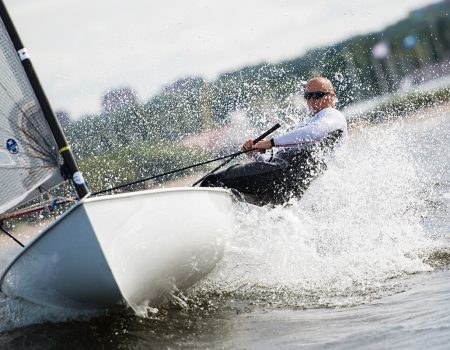
DINGHY
In practically all classes of dinghy sailing and especially dinghy racing, you are very close to the water and there’s almost always a lot of spray. The proximity of the water’s surface coupled with the relative speed of the vessel means that the FLO is unsuited to all but the lightest wind conditions.
We recommend either the polarised Typhoon or Surge for all classes of dinghy sailing & racing, perhaps with the exception of dinghy foiling in light wind conditions. An added benefit of these two models is the patented double vortex lens ventilation of the Surge and Typhoon which will counteract any lens fogging that might develop in cold water locations.
Being so close to the water means that solar reflections can be overwhelming in the mornings and evenings. Quality polarisation is therefore essential for overcoming this blinding glare. If the weather conditions are normally very bright and sunny in your local spot, then you will want to opt for a high category 3 polarised lens with a VLT (visible light transmission rate) of around 9-10%. See the Pacific Blue Typhoon or Surge Ice Blue lens descriptions below for lenses for bright conditions. For darker conditions, you may want to consider the Typhoon Rose Gold lenses which have a VLT of around 14% or Brown lenses which have a VLT of 15.6%.
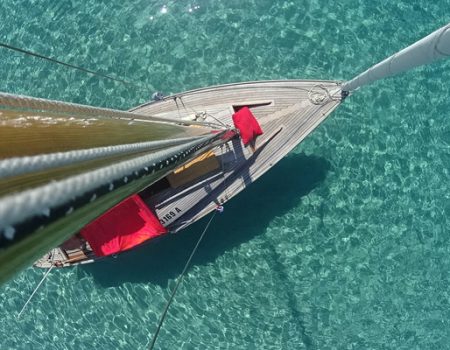
CRUISING & BAY HOPPING
If you spend most of your time cruising in calm waters, there are no special needs for your choice of frame other than remembering that the frame should ideally be a ‘wrap fit’ to minimise the amount of UV light that enters the eyes. Without a wrap fit, UV and visible light reflected from the water surface will always find a way in, even if you are seated at the helm inside the bridge.
As you are unlikely to be suffering from significant spray and sudden jolts, the leash and necklace of the Surge and Typhoon would be surplus to requirements, so the most suitable model for this kind of boating is the FLO. It’s a lightweight 8-base wrap frame which has the added bonus of being floatable. If they are accidentally knocked overboard, they will be simple to retrieve from the water.
For those that spend a good deal of their time indoors looking at digital navigation instruments, you may want to consider a non polarised lens or a lens which is ‘screen friendly’. See below for details of our Zeiss multilayer red lenses for the FLO. If you’re spending more time outside and on the deck and especially in bright and sunny locations, you’ll be more comfortable with a polarised lens with a VLT rate of around 10-12%. A blue mirror coating would also be well suited to blue ocean environments.
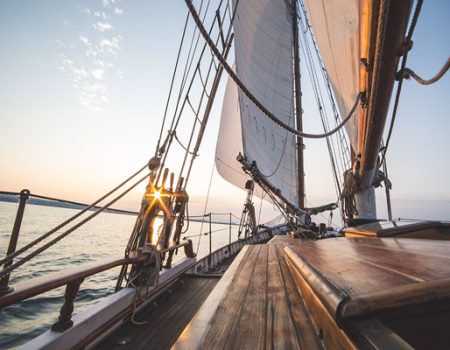
COASTAL & OFFSHORE
If you are motoring or under sail in anything less than 10 knots of wind, any of our sailing sunglasses will perform admirably for you. All three models have an 8-base frame which will protect your eyes from rogue UV light and sea-spray. They are all made from an unbreakable frame material – TR90 – just in case the boom catches you unawares.
If your coastal and offshore sailing is regularly in wind conditions over 10 knots, we would suggest that the Surge or Typhoon is more suitable as both these models were specifically designed for sailing in windy conditions. They have a failsafe leash mechanism, and the Typhoon in particular has over-moulded rubber on the frame surround which will keep you comfortable under sail all day long.
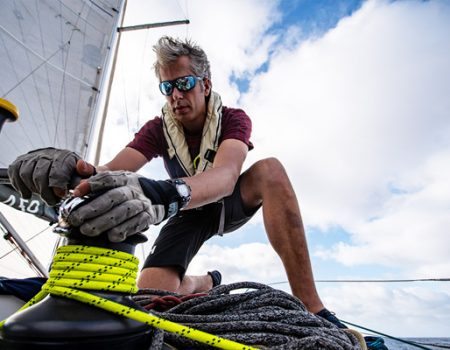
BLUE WATER
There are going to be days when the wind whips up the ocean and you’ll need to be strapped in for the ride. The Surge and Typhoon will be a blessing on these days as wave after wave unload themselves over you. Without a strong and reliable leash system tethering your sunglasses, they will very likely succumb to the ocean – and it will happen fast. The Typhoon in particular is built for conditions such as these with a premium hydrophobic layer that will keep your vision clear and crisp so that you can concentrate on the tasks at hand.
On other days, the water will be so calm that you can see your reflection on the surface. You’ll still need your eye protection, but you may not need the retention system of the Surge of Typhoon. In calm conditions like these, the FLO is the perfect companion to keep your eyes in good health.
When spending extended periods of time blue water sailing, we advise having multiple backups of your sunglasses on board. You only need to spend one day on the water in bright sunshine without eye protection to realise that high performance sailing sunglasses are absolutely essential.
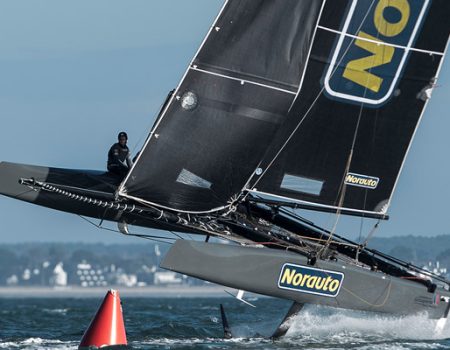
RACING
In any sort of racing environment, you will need to feel secure in the knowledge that your sunglasses are firmly tethered to you with a leash system that is not going to fail. Losing sunglasses to the wind or ocean spray during a race will mean they are gone for good as you will not be going back for them if you’re pushing for position.
If you are racing foils, wipeouts can be intense and incredibly rapid, and for this reason we strongly recommend that the best option is the Typhoon as this model offers the best impact protection with shock absorbing TPU rubber surrounding the frame. Crashes can catapult you into the water (if you are lucky) or onto any part of the boat (if you’re not so lucky) so you’ll want as much impact protection as possible.
The Grilamid TR90 unbreakable frame material used in the Surge and Typhoon has built-in ‘memory’ so that it can deform to absorb an impact and revert to its original shape once the impact load is removed. Coupled with strong and shatterproof lenses, this is the best insurance you can have against an eye injury in a high speed capsize event.
Choosing Lenses
Smoke
Typhoon, Surge and FLO
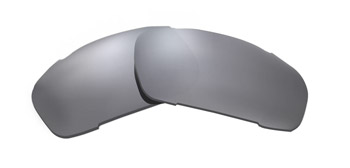
The smoke (grey) nylon lenses for the Typhoon and polycarbonate lenses for the Surge and FLO offer a neutral tone, and are both category 3 polarised lenses. If you like a natural representation of colours, then this is the lens for you.
The Typhoon ‘methane smoke’ nylon lenses by ZEISS have a visible light transmission rate (VLT) of 11.1% which means that they are designed for bright & sunny environments.
For our Flo and Surge models, the VLT is 10% (FLO) and 12% (Surge). At these VLT levels, the lenses will be able to handle strong sunlight and significant glare. However, for cloudy days and sessions when the sun is well on its way down, they may be a little on the dark side when it comes to the end of the day.
Both are equipped with an advanced hydrophobic coating to repel water, an anti-smudge oleophobic coating and a hard coating on both sides of the lenses.
POLARIZED
Show More...
Brown
Typhoon and Surge
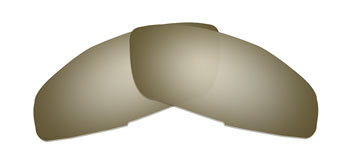
The brown base colour lenses for the Surge & Typhoon offer more enhanced colours, and are also both category 3 polarised lenses. As the base lens colour has a red/brown hue, this tends to lift or ‘pop’ all colours (but especially reds and greens). This in turn increases contrast.
The specification for the methane brown Typhoon lenses was recently upgraded from polycarbonate to nylon material. The Zeiss nylon methane brown lenses have a VLT of 15.6%. For the Surge and Flo models, the VLT is 10%.
There is a noticeable difference in the performance of the brown lenses in cloudy / darker conditions. Owing to the increased contrast afforded by brown base lenses, it is noticeably easier to see details when the light levels drop. This is not to say that the brown lenses do not function well in bright light. In fact, they perform admirably in bright conditions. Brown lenses are versatile all round lenses for all types of conditions.
As with the smoke lenses, both are equipped with an advanced hydrophobic coating to repel water, an anti-smudge oleophobic coating and a hard coating on both sides of the lenses.
POLARIZED
Show More...
Super blue & Ice blue
Typhoon, Surge and FLO
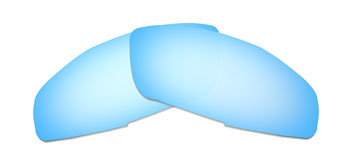
The Ice Blue polycarbonate lenses for the Surge & Flo and the Super Blue nylon lenses for the Typhoon offer yet more enhanced contrast and colour perception than the brown lenses. The base colour of both these lenses is rose / violet. Our VIVIDE lens technology controls light transmission into the eye by filtering out blue light and enhancing red and green light. If your local kayak angling spot is awash with hues of blue (e.g the Caribbean or Indian Ocean) these category 3 polarised lenses will bring the visible light back into balance.
The VLT for the Ice Blue lenses is 8.35% which is right on the lower end of a category 3 lens. It is therefore a lens suited to very bright sunny conditions and is the darkest tint of all our watershades lenses. However, as with our brown lenses, there is good performance of these lenses in cloudier conditions owing to the increased contrast afforded by the lens base colour.
As with all our watershades lenses, the VIVIDE Ice Blue lenses come equipped with an advanced hydrophobic coating to repel water, an anti-smudge oleophobic coating and a hard coating on both sides of the lenses.
POLARIZED
Show More...
Pacific Blue
Typhoon and FLO
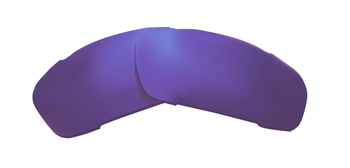
Similar in performance to Ice Blue lenses noted above, the violet base colour of the Pacific Blue lenses by ZEISS provide enhanced contrast and vivid colour perception. Available in both the Typhoon and Flo models, the lens material is polyamide (nylon) which offers super crisp vision with an Abbe value of 52, the highest of all of our lenses.
The Pacific Blue lenses subdue the amount of blue light entering the eye and enhance the reds and greens. The blue mirror coating also reflects blue light. These category 3 polarised lenses are perfect for bright sunny conditions in environments with deep blue ocean colours like the Pacific or Atlantic.
The VLT for these lenses is 9.95% which is also at the lower end of a category 3 lens and so are perfectly suited to bright and sunny conditions.
The Pacific Blue lenses come equipped with Zeiss’s advanced hydrophobic coating to repel water, an anti-smudge oleophobic coating and a hard coating on both sides of the lenses.
POLARIZED
Show More...
Rose Gold
Typhoon
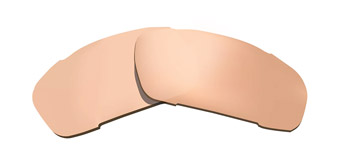
ZEISS Rose Gold nylon lenses have a brown base lens colour which is coupled with a rose gold mirror coating. This lens option is available only in the Typhoon.
The brown base lens colour provides good contrast. The VLT rate for these lenses is 14.2% which while still squarely within the category 3 range, is a bit higher than some of our other watershades lenses which fall in the 8-12% range. This lens is therefore well equipped for lower light conditions and cloudier days, but may not be the ideal choice for super-bright sunny conditions.
These lenses come equipped with Zeiss’s advanced hydrophobic coating to repel water, an anti-smudge oleophobic coating and a hard coating on both sides of the lenses..
POLARIZED
Show More...
Multilayer Green
Surge and FLO
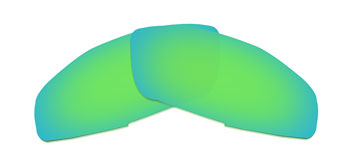
These polycarbonate Levanté Series lenses by LiP Sunglasses have a brown base colour and a multilayer green mirror coating. They are available in both the FLO and Surge models.
The brown base colour offers excellent contrast and colours really ‘pop’ with this lens. The VLT rate is 11.5%. so they are a good all round tint – not too bright – not too dark. As with most multilayer mirror coatings, depending on the angle at which these lenses are seen, the mirror colour blends from a deep blue to a rich dark green.
These lenses come equipped with an advanced hydrophobic coating to repel water, an anti-smudge oleophobic coating and a hard coating on both sides of the lenses.
POLARIZED
Show More...
Multilayer Blue
Surge and FLO
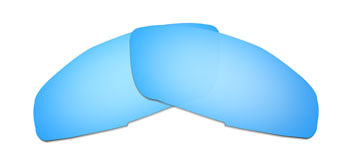
These polycarbonate Levanté Series lenses by LiP Sunglasses have a grey base colour and a multilayer blue mirror coating. They are also equipped with an anti-fog coating on the inner lens surface. They are available in both the FLO and Surge models.
The anti-fog coating is designed to defog lenses that become foggy due to body heat / moist exhaled breath so this lens is ideal for humid environments.
The grey base colour has a neutral tone and the VLT rate is 12.5% – which is a good all round tint for bright and sunny conditions.
These Smoke Multilayer Blue mirror lenses come equipped with an advanced hydrophobic coating, anti-smudge oleophobic coating and a hard coating on the front surface and anti-fog and hard coating on the inner surface.
POLARIZED
Show More...
Multilayer Red
Surge
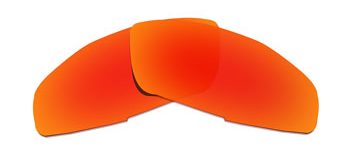
These polycarbonate Levanté Series lenses by LiP Sunglasses have a grey base colour and a multilayer red mirror coating. They are available in the Surge model only.
The grey base colour has a neutral tone and the VLT rate is 17.4% – ideal for cloudy or variable lighting conditions. The injected polarisation layer cuts out 99% of reflected glare
As with many multilayer mirror coatings, depending on the angle at which these lenses are seen, the mirror colour blends from deep red to fiery orange.
These lenses come equipped with an advanced hydrophobic coating to repel water, an anti-smudge oleophobic coating and a hard coating on both sides of the lenses.
POLARIZED
Show More...
Copper Silver Mirror
Surge and FLO

These polycarbonate VIVIDE Series lenses by LiP Sunglasses have a blended copper-grey base colour and a uniform silver mirror coating. They are available in both the FLO and Surge models.
The copper-grey base colour enhances reds and greens, while the uniform flash mirror coating cuts out some of the glare. With a VLT rate of 10%, these lenses are at the darker end of Category 3 lenses and are ideal for very bright cloudless skies.
However, as these lenses are not polarised, reflected glare is not significantly filtered out so these lenses may not be ideal if you are looking for lenses that remove glare.
These lenses come equipped with an advanced hydrophobic coating to repel water, an anti-smudge oleophobic coating and a hard coating on both sides of the lenses.
NON POLARIZED
Show More...
Multilayer Red
FLO
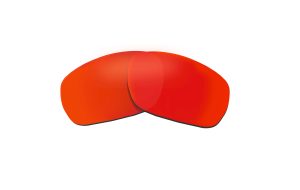
ZEISS multilayer red lenses are category 2 polycarbonate lenses with a VLT rate of 26%. The base colour is smoke (grey). It is a true tone lens with a progressive red multilayer coating with red/yellow hues.
Available only in the Flo model, these lenses are suited to medium / low light conditions. As they are not polarised, they are not suitable for handling significant glare. They are however suitable for cloudy days with intermittent sunshine or dawn dusk sessions when glare is not a concern.
As with all our watershades lenses, these Zeiss lenses come equipped with an advanced hydrophobic coating to repel water, an anti-smudge oleophobic coating and a hard coating.
NON POLARIZED
Show More...
Eclipse Smoke
Typhoon
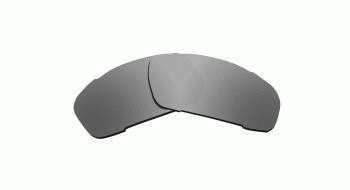
Our ecLiPse photochromic lenses offer a versatile solution for days when the weather and lighting conditions are changeable. The tint of these lenses adapts to changes in visible light, ranging from 45% when light levels are low to 15% in bright sunny conditions. The base colour is grey which offers a neutral tone.
Available only in the Typhoon model, these lenses are suited to variable lighting conditions and cloudy days with intermittent sun. As they are not polarised, they do not cut out reflected glare.
As with all our watershades lenses, these photochromic lenses come equipped with an advanced hydrophobic coating to repel water, an anti-smudge oleophobic coating and a hard coating on both inner and outer lens surfaces.
NON POLARIZED
Show More...
Eclipse Red MIrror
Typhoon
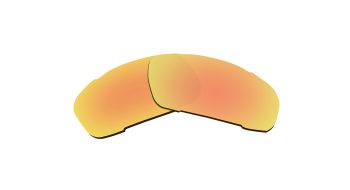
Our ecLiPse photochromic lenses with a red mirror coating come into their own when the clouds roll in and are ideal for changeable winter and spring weather conditions. As with all of our photochromic lenses, the tint of these lenses adapts to changes in visible light, ranging from 79% when light levels are really low to 25% when the sun emerges from behind the clouds.
With a rapid activation and deactivation speed of 22-24 seconds irrespective of temperature, they offer a versatile solution for difficult lighting conditions.
Available only in the Typhoon model, these lenses come equipped with an advanced hydrophobic coating to repel water, an anti-smudge oleophobic coating and a hard coating on both inner and outer lens surfaces.
NON POLARIZED
Show More...
Watershades lens layer technology
Sailing Eyewear Guide
Our comprehensive guide will walk you through all the factors you should take into account before choosing your sailing eyewear.
Download our sailing eyewear guide below.
